Gallery: The Springtime of the Renaissance | reviews, news & interviews
Gallery: The Springtime of the Renaissance
Gallery: The Springtime of the Renaissance
Browse a selection of images from the Palazzo Strozzi exhibition

The images in this gallery illustrate some of the links and juxtapositions made in The Springtime of the Renaissance. Classical statues which influenced Florentine artists, works reunited for the first time in centuries, sculptural forms reproduced in two-dimensional paintings (see main image) - you can find all of them below. The 20 images are arranged in 10 pairs, each of which represents a theme of the exhibition.
Click on the images to enlarge, and read the full article about the exhibition here.
Row 1: The Dawn of the Renaissance
The first-century BC Boy with Thorn in marble (Galleria Estense, Modena) was the direct inspiration for the figure of the shepherd in the corner of Brunelleschi's The Sacrifice of Isaac, 1401 (Museo Nazionale del Bargello, Florence), his bronze panel for the competition for the bronze doors of the Baptistery.
Row 2: Orsanmichele
The former granary in the heart of Florence became in the early Quattrocento an open-air exhibition space for a revolution in sculpture. Two of the sculptures are reunited here for the first time since 1460: Ghiberti's St Matthew, 1419–22 (Chiesa e Museo di Orsanmichele), and Donatello's St Louis of Toulouse, 1422–5 (Museo dell'Opera di Santa Croce).
Row 3: Civic and Christian Romanitas
The exhibition reunites pieces of Michelozzo's Funerary Monument of Bartolomeo Aragazzi in the Episcopal Palace in Montepulciano. Created by Michelozzo and his workshop in 1427-38, it was broken up in the 17th century. His marble Two Adoring Angels (Victoria and Albert Museum) are exhibited alongside the only surviving fragment of the monument's gilt bronze Inscription (Episcopal Palace, Montepulciano).
Row 4: "Spirits", both Sacred and Profane
The classical Roman marble Putto with a Goose, mid-1st century AD (Musei Vaticani), was a type of statue known to Florentines and may have been an influence on Donatello for his bronze Spiritelli (Spirits), 1439, from the cathedral's hugely popular Choir Loft (Musée Jacquemart-André, Institut de Paris)
Row 5: The Rebirth of the Condottieri
Donatello was almost single-handledly responsible for rekindling the tradition of the equestrian statue. Filarete's small bronze copy of an iconic Roman statue Marcus Aurelius, c. 1440–5 (Skulpturensammlung, Staatliche Kunstsammlungen, Dresden) cites its roots in classical antiquity. Donatello's Gattamelata in Padua prompted Alfonso V of Aragon to commission an even grander monument to himself. The immense bronze Carafa Protome, c. 1455, is all that Donatello managed to complete(Museo Archeologico Nazionale, Naples).
Row 6: Sculpture in Paint
The concept of sculptural mass and architectural depth migrated across onto the walls of Florence. Masaccio's St. Paul, 1426 (Museo Nazionale di San Matteo, Pisa), was painted on wood. Andrea del Castagno's Cumaean Sybil, 1448–9 (Galleria degli Uffizi), is part of a series of monumental fresco portraits for the loggia of a villa outside Florence.
Row 7: History in Perspective
Though taking their cue from the crowded bas-reliefs of Roman sarcophagi, Florentine sculptures added an extra dimension with the discovery of the vanishing point. Compare Donatello's early St George and the Dragon, c. 1417 (Museo Nazionale del Bargello), with Desiderio da Settignano's St Jerome in the Desert, c. 1461 (National Gallery of Art, Washington).
Row 8: The Spread of Beauty
The second half of the 15th century found commissions migrating from the public sphere to the private, especially when Luca della Robbia created a way of producing affordable faux-marble by glazing terracotta. His Madonna and Child (Genoa Madonna), 1445–50 (Detroit Institute of Arts), is shown alongside a comparable painting on wood by Filippo Lippi, Madonna and Child, c.1460 (Palazzo Medici Riccardi, Provincia di Firenze / Beni Storico-Artistici).
Row 9: Beauty and Charity
A great deal of religious art was created for buildings with a charitable purpose, such as the hospital seen in Bicci di Lorenzo's fresco of Pope Martin V Consecrates the Church of Sant’Egidio in 1420, c.1424 (Ospedale di Santa Maria Nuova, Patrimonio Storico Artistico dell'Azienda Sanitaria di Firenze). Illustrated over the left door is (almost certainly) Dello Delli's painted terracotta of Christ Showing the Wound in His Side, c.1420–4. The original (Victoria & Albert Museum) is exhibited alongside it for the first time.
Row 10: From City to Palace, the New Patrons of the Arts
The spread of private wealth in republican Florence eventually found patrons celebrating the individual. Bas-relief of classical figures such as Mino da Fiesole's Julius Caesar, c. 1455–60 (Cleveland Museum of Art), proliferated alongside the new taste for portrait busts such as Desiderio da Settignano's Marietta Strozzi, c.1464 (Bode-Museum, Staatliche Museen zu Berlin).
- The Springtime of the Renaissance: Sculpture and the Arts in Florence, 1400-1600 at the Palazzo Strozzi until 18 August, then at Musée du Louvre from 26 September to 6 January 2014
Explore topics
Share this article
The future of Arts Journalism
You can stop theartsdesk.com closing!
We urgently need financing to survive. Our fundraising drive has thus far raised £33,000 but we need to reach £100,000 or we will be forced to close. Please contribute here: https://gofund.me/c3f6033d
And if you can forward this information to anyone who might assist, we’d be grateful.

Subscribe to theartsdesk.com
Thank you for continuing to read our work on theartsdesk.com. For unlimited access to every article in its entirety, including our archive of more than 15,000 pieces, we're asking for £5 per month or £40 per year. We feel it's a very good deal, and hope you do too.
To take a subscription now simply click here.
And if you're looking for that extra gift for a friend or family member, why not treat them to a theartsdesk.com gift subscription?
more Visual arts
 Help to give theartsdesk a future!
Support our GoFundMe appeal
Help to give theartsdesk a future!
Support our GoFundMe appeal
 Best of 2024: Visual Arts
A great year for women artists
Best of 2024: Visual Arts
A great year for women artists
 Electric Dreams: Art and Technology Before the Internet, Tate Modern review - an exhaustive and exhausting show
Flashing lights, beeps and buzzes are diverting, but quickly pall
Electric Dreams: Art and Technology Before the Internet, Tate Modern review - an exhaustive and exhausting show
Flashing lights, beeps and buzzes are diverting, but quickly pall
 ARK: United States V by Laurie Anderson, Aviva Studios, Manchester review - a vessel for the thoughts and imaginings of a lifetime
Despite anticipating disaster, this mesmerising voyage is full of hope
ARK: United States V by Laurie Anderson, Aviva Studios, Manchester review - a vessel for the thoughts and imaginings of a lifetime
Despite anticipating disaster, this mesmerising voyage is full of hope
 Lygia Clark: The I and the You, Sonia Boyce: An Awkward Relation, Whitechapel Gallery review - breaking boundaries
Two artists, 50 years apart, invite audience participation
Lygia Clark: The I and the You, Sonia Boyce: An Awkward Relation, Whitechapel Gallery review - breaking boundaries
Two artists, 50 years apart, invite audience participation
 Mike Kelley: Ghost and Spirit, Tate Modern review - adolescent angst indefinitely extended
The artist who refused to grow up
Mike Kelley: Ghost and Spirit, Tate Modern review - adolescent angst indefinitely extended
The artist who refused to grow up
 Monet and London, Courtauld Gallery review - utterly sublime smog
Never has pollution looked so compellingly beautiful
Monet and London, Courtauld Gallery review - utterly sublime smog
Never has pollution looked so compellingly beautiful
 Michael Craig-Martin, Royal Academy review - from clever conceptual art to digital decor
A career in art that starts high and ends low
Michael Craig-Martin, Royal Academy review - from clever conceptual art to digital decor
A career in art that starts high and ends low
 Van Gogh: Poets & Lovers, National Gallery review - passions translated into paint
Turmoil made manifest
Van Gogh: Poets & Lovers, National Gallery review - passions translated into paint
Turmoil made manifest
 Peter Kennard: Archive of Dissent, Whitechapel Gallery review - photomontages sizzling with rage
Fifty years of political protest by a master craftsman
Peter Kennard: Archive of Dissent, Whitechapel Gallery review - photomontages sizzling with rage
Fifty years of political protest by a master craftsman
 Dominique White: Deadweight, Whitechapel Gallery review - sculptures that seem freighted with history
Dunked in the sea to give them a patina of age, sculptures that feel timeless
Dominique White: Deadweight, Whitechapel Gallery review - sculptures that seem freighted with history
Dunked in the sea to give them a patina of age, sculptures that feel timeless







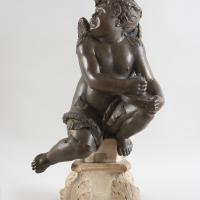


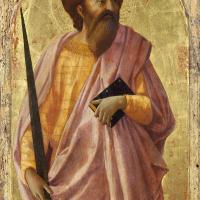

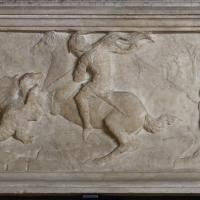
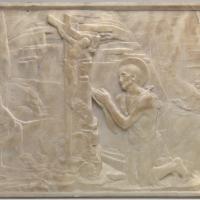
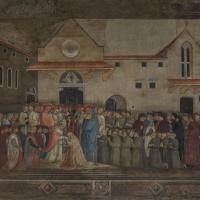
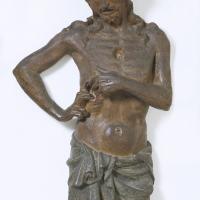

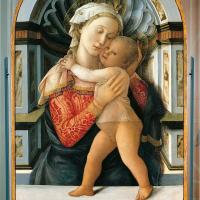

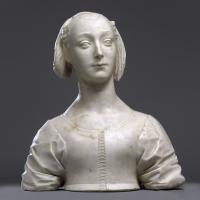
Add comment